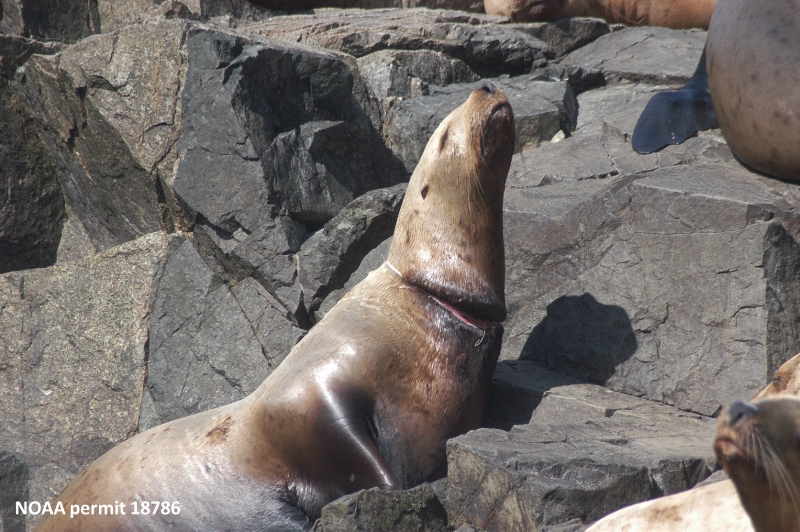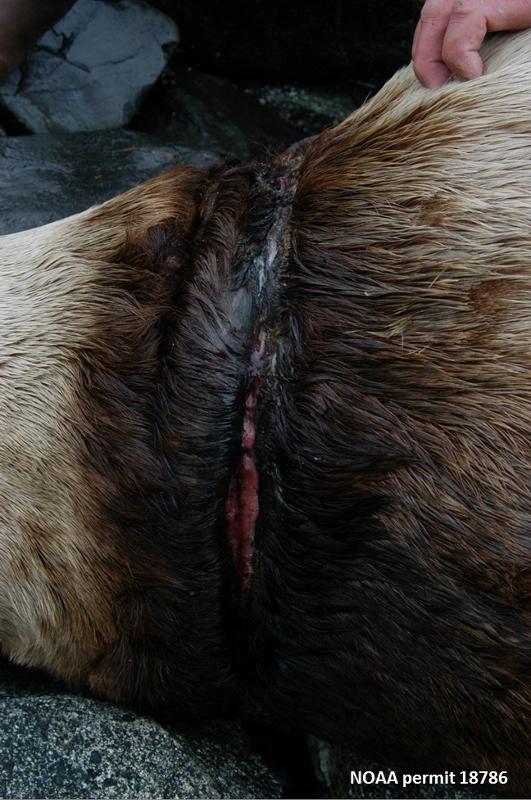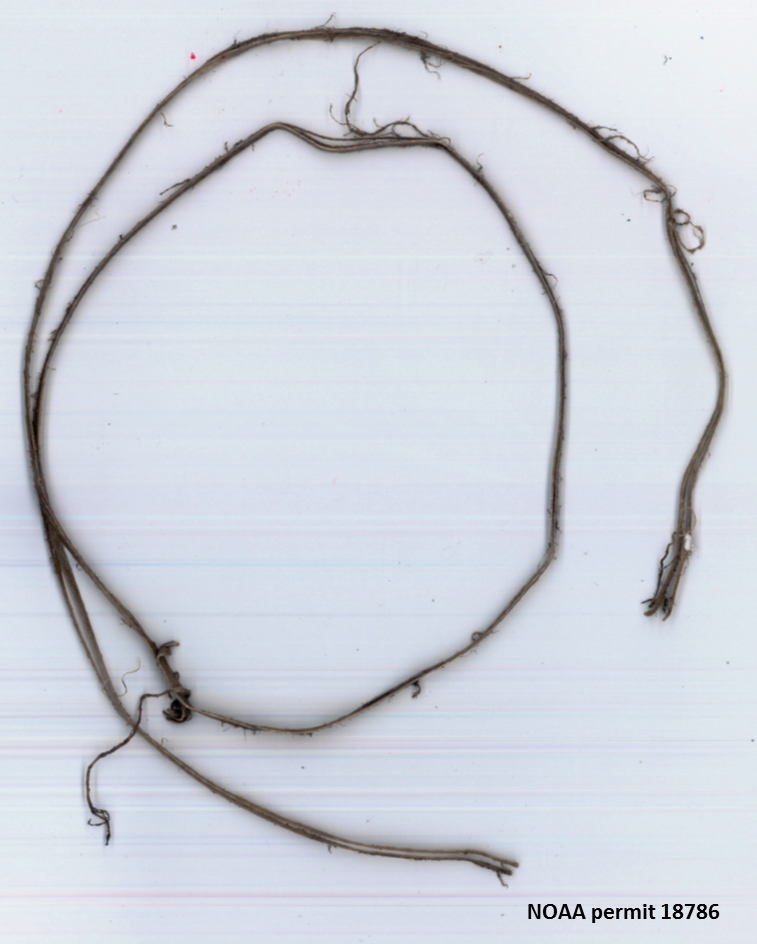Alaska Department of Fish & Game (ADF&G) biologists have been studying the life history of Steller Sea lions (Eumetopias jubatus; SSL) throughout their Alaskan range for more than 50 years. In some areas such as the western Aleutian Islands, populations have declined about 90% since the 1970’s and have not recovered. Meanwhile, overall eastern population counts have been increasing roughly 3% per year during this same time frame. Sites in and around Glacier Bay National Park (GBNP) in northern Southeast Alaska were first colonized during the 1980’s through 2000’s and have seen even higher annual growth. This region saw an overall average increase of about 8% per annum, with yearly growth as follows: Graves Rocks ~4%, South Marble Island >16%, and Inian Islands >14%.

FIGURE 1. Steller sea lion numbers in northern Southeast Alaska increased approximately 8% per year during 1980’s – 2000’s, while the number of sea lions using sites in the Inian Islands and South Marble Island (SMI) have increased at rates of ~14% - 24% per year.
The reasons for the population trends aren't entirely clear, but scientists have been studying a number of possible causes such as changes in prey availability, predation, or reproductive rate. As of this writing, no single thing has been definitively identified as the primary driver of the population declines observed in the west, or the increases in the east, so scientists continue testing additional hypotheses.
As human populations continue their upward trajectory, the world’s oceans have become increasingly littered with evidence of our existence, especially since the advent of plastics which generally do not biodegrade. This ocean litter is called marine debris and is defined by NOAA as “any persistent solid material that is manufactured or processed and directly or indirectly, intentionally or unintentionally, disposed of or abandoned into the marine environment or the Great Lakes.”
Sea lions are curious and playful by nature and that often means a marine debris encounter turns into a play session. In some areas like Southeast Alaska, we have documented hundreds of SSL that have become entangled in marine debris and most often the material is caught around the neck. The most commonly identified neck entangling material that we see in Southeast is the ubiquitous plastic packing band (Figures 2-5).
 FIGURE 2. During the last several decades, Alaska Department of Fish and Game biologists have documented hundreds of Steller sea lions entangled in marine debris. Where identifiable, the majority of these have plastic packing bands around their necks that these sea lions will likely be wearing for the remainder of their lives because these bands do not degrade over time.
FIGURE 2. During the last several decades, Alaska Department of Fish and Game biologists have documented hundreds of Steller sea lions entangled in marine debris. Where identifiable, the majority of these have plastic packing bands around their necks that these sea lions will likely be wearing for the remainder of their lives because these bands do not degrade over time. Plastic packing bands are used to secure/reinforce many kinds of material and packaging in the modern world. Extremely cheap, compact, and durable, plastic packing materials are distributed on large, continuous rolls that can contain thousands of feet of strapping. The strapping is fed through a machine that is designed to encircle something with a strap, cut it to length, and use heat/friction/ultrasound to weld the ends together. That whole process takes just an instant, but when the strap ends up in the ocean and on a sea lion the misery lasts a lifetime. You see, packing straps don't bio- or photo-degrade so they persist in the environment or sometimes on living organisms like sea lions. And they are really strong too, so they are difficult to break without mechanical cutting. What that means for an entangled sea lion is that the packing band will gradually cut into their neck as they move and grow larger. Clearly these gruesome wounds are difficult to look at, sure, but what’s less clear is how they affect survival and reproductive rates.

FIGURE 3. Hundreds of Steller sea lions have become entangled in plastic packing bands, the ubiquitous strapping used to secure many kinds of modern packaging quickly and cheaply. These bands do not stretch, nor do they break easily, so they cut into flesh as the entangled sea lion moves and grows.
For several years, Alaska Dept. of Fish & Game biologists and collaborators have been developing tools and techniques for capturing SSL as part of their life history studies. Recent advancements in materials and methods have made it practical to adapt these techniques to capture entangled SSL to remove packing bands. Typically this involves using a projector (i.e. “dart gun”) to inject a mixture of tranquilizing and sedating drugs, waiting for them to take effect, approaching the dozing sea lion, cutting the packing band, taking morphometric measurements, applying identifying marks or tags for tracking purposes, and administering a reversal. About half the time, the darted sea lion enters the water before the drugs begin to influence them. The capture drugs currently in use do not cause sedation to the level that causes drowning, rather a drugged sea lion will just swim slowly in a trance-like state. So when a darted SSL enters the water, biologists in several skiffs follow and monitor the darted animal until it is sufficiently sedated, then they use ropes to hold it nearby while they work to remove the entanglement, get basic measurements, and apply identifying marks. Reversal drugs are administered and within a few minutes the sea lion becomes alert and swims away.

FIGURE 4. This is a plastic packing band moments after it was cut from an entangled Steller sea lion. This band had cut so deeply into the sea lion’s neck that it was no longer visible.
No doubt you're thinking “All this sounds really complicated and expensive. There has to be an easier, cheaper way to fix this problem.” That’s because there is. Most people know the story of the plastic 6-pack rings and the dangers they posed in the past. In a nutshell, a variety of beverages are packaged in aluminum cans and sold in groups of 6 which are conveniently held together by a single piece of plastic containing many holes. During the late 70’s they were identified as being particularly dangerous to marine life, so activists began advising consumers to cut the rings prior to discarding them. Many people still do this compulsively to this day (we sure do at my house) but beginning in 1989 the plastics in 6-pack rings have been required to break down (photo-degrade) in the sun. That way, even if we forget to cut the rings, they’ll eventually get brittle and break.

FIGURE 5. This is another view of a plastic packing band after it was cut from an entangled Steller sea lion. This band, while frayed, still maintained good integrity and would not have broken on its own.
Unfortunately, the same photo-degradation requirements don't apply to the plastics used in packing bands, nor is it clear if enough sun would reach a neck entanglement to cause the packing band to break anyway. That’s why we’ve started doing outreach to educate the public on the dangers that ALL loops, especially plastics, pose to marine mammals. Just like the campaign against 6-pack holders in olden days, we remind the public of the essential role they play; we all have to be sure to cut any loops of manmade materials and dispose of them properly so that animals can’t become entangled. That’s right, “Lose the Loop!” and “Stash That Trash!” It’s not much, but it’s a simple thing we can do to help safeguard the world’s oceans and the creatures that inhabit them.
Please visit our website and watch our video for more information on the subject.
www.entangledsealions.adfg.alaska.gov
https://vimeo.com/29863322
